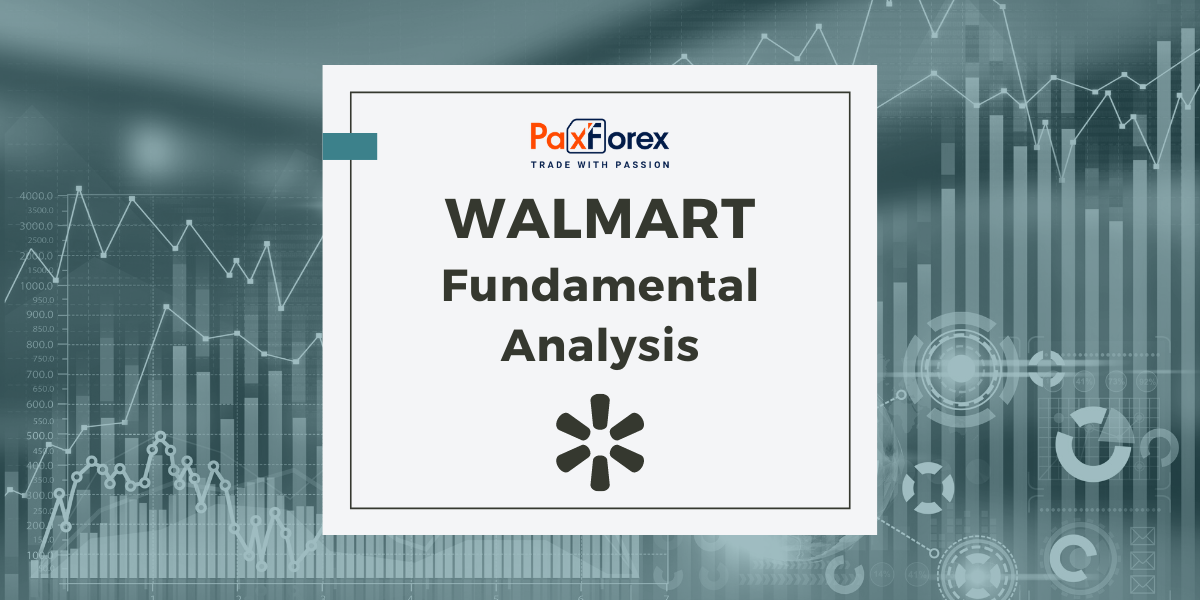
Source: PaxForex Premium Analytics Portal, Fundamental Insight
More high-income consumers are now shopping at Walmart, a sign of the growing pressure that rising interest rates, continued high inflation and higher gasoline prices are putting on the economy.
The retail giant recently reported its Q4 earnings, and while they showed that Walmart remains financially sound, this could portend an impending market downturn. Since there is a significant weakness in the economy, this report could be a serious harbinger of an impending downturn.
Walmart posted strong revenue growth globally in the last quarter, with sales up nearly 8% in constant currency terms to $164 billion. Sales at comparable stores (comp) were up more than 8% and nearly 14% YoY, while sales at Sam's Club were up 12% and 22%, respectively. Consumers are obviously stocking up and concluding that bulk shopping is the way to get a better price as prices for groceries and other items continue to rise.
Even e-commerce sales were strong, jumping 17% in Q4 in the U.S., a notable increase given that Amazon showed only 14% growth in U.S. currency-adjusted sales.
Walmart's strength was groceries, whose comparable sales grew by tens of percent. However, since food inflation rose in the mid-tenths of a percent, well above the reported national inflation rate, it appears that retail sales growth is indeed driven by price increases.
Moreover, more than half of the increase in grocery prices is attributable to high-income consumers who find it necessary to shop in the lower market. While this may be a long-term advantage for Walmart, as many of these new customers may stay with the company after inflation finally subsides, it suggests that these are particularly difficult times.
It also indicates that consumers are laying low and buying only the essentials. Overall Walmart merchandise sales are down in the mid-single digits, with the retailer noting widespread declines in sales of toys, electronics, home goods, and clothing. Sales of health and wellness items rose by small double-digit percentages, but, as with food, margins here are much lower.
So while sales of these categories of goods grew by 330 basis points for the full (fiscal) year and also increased market share, they generate much smaller margins.
This situation is likely to continue. Despite the relatively strong results, Walmart predicts that U.S. sales will grow a maximum of 5% on a constant currency basis, with sales growth of only 2% to 2.5%. The company predicts that earnings will fall to a range of $5.90 to $6.05 per share from $6.29 per share last year.
That's a weak forecast that should worry investors. A National Association for Business Economics survey warns that 58% of economists believe there is more than a 50% chance of a recession in the next 12 months, with 33% predicting it will come in Q2 and 21% believing it will start in the third.
While Walmart looks quite capable of continuing to gain market share even during a recession, it is returning more cash to shareholders than it is generating in free cash flow. Cash earnings for the year rose to $12.2 billion, but Walmart paid out $6.1 billion in dividends and repurchased $9.9 billion worth of stock for a total of $16 billion. This is not what investors would like to see from the retailer for a long period of time.
Walmart looks like it is signaling a deteriorating economy. Sales are up, but profits are falling and will likely continue to fall. More affluent shoppers find it necessary to buy discounted groceries. When even high-income households are saving, it's a worrying sign for the rest of us.
Investors may want to use this opportunity to bolster their positions in protective stocks, which may survive the downturn or even prosper. Walmart, valued at 20 times next year's projected earnings, is not exactly a discount stock in itself, but it could still be a long-term refuge from any storm.
As long as the price is below 141.00, follow the recommendations below:
- Time frame: D1
- Recommendation: short position
- Entry point: 136.93
- Take Profit 1: 135.00
- Take Profit 2: 130.00
Alternative scenario:
If the level of 141.00 is broken-out, follow the recommendations below:
- Time frame: D1
- Recommendation: long position
- Entry point: 141.00
- Take Profit 1: 144.00
- Take Profit 2: 147.00













